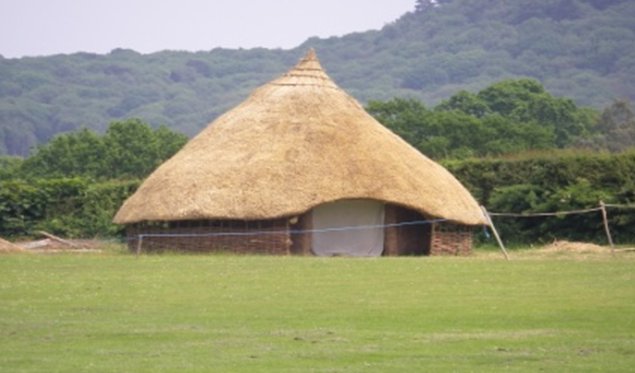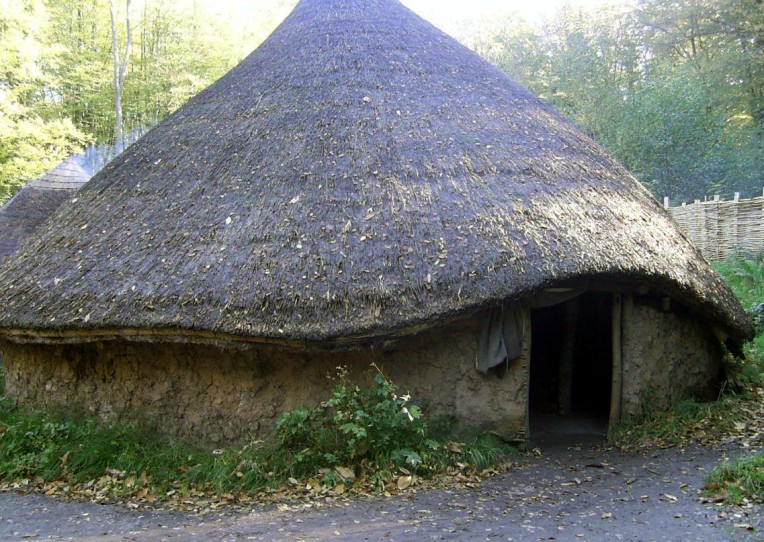Once upon a time — about 2,500 years ago — people in what is now Britain switched from building rectangular houses to building round houses: in many instances, small circular structures with wooden walls made of wattle and daub, no windows, a conical roof, and a single entrance. And for more than 2,500 years, from the early Bronze Age to the late Iron Age, they stuck with this circular design, even while people in the rest of Europe — or what later became Europe — lived in rectangular structures.
It was with the Roman conquest that the British, too, began to adopt rectangular house designs. But evidence of the region’s history of round construction can still be found in archeological sites all over the UK, from Dartmoor, Devon, England, to Aberdeenshire, Scotland.
In recent years, a number of replica round houses have been built. Below is one in Burwardsley, Cheshire, which is open to school groups and other visitors –

 First constructed in the 3rd millenium BC in what is now southwest Scotland, prehistoric round houses continued to be built up through the UK’s Roman period, particularly in the north and west of the country.
First constructed in the 3rd millenium BC in what is now southwest Scotland, prehistoric round houses continued to be built up through the UK’s Roman period, particularly in the north and west of the country.


